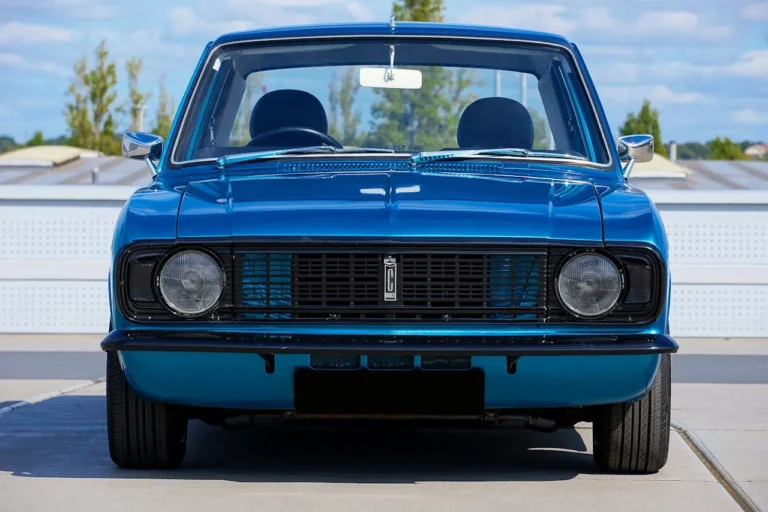
Fewer Selling Days, Higher Discounts Shape November U.S. Auto Market
J.D. Power and GlobalData’s November 2025 automotive forecast paints a picture of a U.S. new-vehicle market that is cooling from its recent highs, adjusting to shifting incentives, changing powertrain dynamics and evolving consumer affordability challenges. While sales volumes and the overall selling pace are declining compared with last year, the industry is still generating strong revenue and retailer profits, supported by elevated transaction prices, firm used-vehicle values and disciplined incentive strategies.
At the headline level, total new-vehicle sales in November 2025—combining retail and fleet—are projected to reach 1,255,900 units. This represents a 5.2% decline versus November 2024, and it comes in a month with 25 selling days, one fewer than a year earlier. On a seasonally adjusted basis, the total SAAR (seasonally adjusted annualized rate) is expected to be 15.4 million units, down noticeably from 16.6 million units in November 2024. The data clearly suggests the industry has shifted into a slower gear as it digests prior “pull-ahead” demand and navigates a more complex incentive and pricing environment.
Retail sales, which exclude fleet deliveries to rental, commercial and government buyers, tell a similar story. New-vehicle retail sales in November are projected at 1,058,500 units, a 4.8% decrease from November 2024. The retail SAAR is forecast at 12.5 million units, down from 13.4 million a year ago. In short, both retail and total demand are off year-over-year, but not in free fall; instead, they are normalizing from an artificially elevated pace earlier in the year.
EV pull-ahead and shifting demand
According to Thomas King, president of OEM solutions at J.D. Power, one of the defining forces behind November’s results is the aftermath of the expiration of federal electric vehicle (EV) tax credits on September 30. In the months leading up to that deadline, many shoppers accelerated their EV purchase decisions to capture the incentive before it disappeared. That pull-ahead led to a spike in EV sales and temporarily boosted the industry’s overall sales pace.
Now, two months after the tax credit expired, the market is feeling the hangover. For November, EVs are expected to account for only 6.0% of new-vehicle retail sales—flat with October but less than half of the 12.9% share they reached in September. This sharp drop underscores how dependent near-term EV demand has been on tax credits and how sensitive shoppers are to changes in effective transaction prices.
At the same time, the powertrain mix is rebalancing. Internal combustion engine (ICE) vehicles are projected to make up 77.5% of new-vehicle retail sales, an increase of 2.3 percentage points from a year earlier. Hybrid electric vehicles (HEVs) are expected to account for 14.5% of retail sales, up 1.7 points, suggesting that many buyers who might have considered a full EV instead gravitated toward conventional hybrids. Plug-in hybrid vehicles (PHEVs), by contrast, are on pace for just 1.1% of sales, down 1.4 points from November 2024, reflecting both lower consumer awareness and the same incentive-driven dynamics that have hit EVs.
Pricing, incentives and discounts
In this environment, automakers are adjusting their pricing and incentive strategies. They are navigating the end of EV tax credits, tariff-related cost pressures, evolving fuel economy requirements and the seasonal transition to new model-year inventory. These forces are distorting what would normally be a straightforward year-end discount cycle.
For EVs specifically, discounts remain large by historical standards. Average EV discounts in November are expected to be $11,869 per vehicle. That is $260 higher than in November 2024, but nearly $1,000 lower than in October 2025, illustrating that EV pricing remains fluid as manufacturers search for the right balance between volume and profitability. Non-EV vehicles, by contrast, carry much lower discounts: average incentives on non-EVs are projected at $2,960, up $161 versus a year ago but still far below EV levels.
When all vehicles are combined, the average manufacturer incentive spend per unit in November is on track to reach $3,211. That is $375 higher than in October but $125 lower than November 2024. The year-over-year decline does not mean discounts are disappearing; instead, it reflects a shift in the sales mix away from heavily discounted EVs and toward non-EVs that require smaller price concessions. In addition, leasing—a channel where incentives are often concentrated—has softened, which also helps pull overall incentive averages lower.
Leasing is expected to account for 20.5% of November sales, down 2.7 percentage points from a year ago. This is particularly significant for EVs. Many manufacturers leaned heavily on leases to pass the EV tax credit through to consumers, making monthly payments more attractive. With the tax credit gone or less accessible, EV leasing has fallen sharply. J.D. Power projects that EV leasing will trend at around 54% in November, down a steep 12 percentage points from November 2024. A smaller share of EV leases plus a lower share of EV sales overall means fewer incentives are being spent per unit than a year earlier.
Affordability: payments, interest rates and loan terms
Affordability remains a key challenge for many buyers. The average monthly finance payment for a new vehicle in November is expected to hit $760, a record for the month and $19 higher than November 2024. To keep those payments manageable, more consumers are turning to very long-term loans. Finance contracts with terms of 84 months or longer are projected to represent 11.1% of financed sales in November, up 2.1 percentage points year over year and near the highest level ever recorded for November.
Despite these pressures, there is some relief on the financing side. The average interest rate on new-vehicle loans is expected to be 6.05% in November, down 27 basis points from a year ago. While rates are still significantly higher than pre-pandemic lows, this modest easing helps temper the payment impact of higher vehicle prices.
Those prices continue to rise, though at a more moderate pace. The average new-vehicle retail transaction price in November is forecast at $46,029, an increase of $722 or 1.6% versus November 2024. Transaction prices now equal about 89.4% of the manufacturer’s suggested retail price (MSRP), up 0.2 percentage points from last year, which means vehicles are still selling close to sticker, even as inventory improves.
Used vehicles, equity and negative equity trends
The used-vehicle market is also playing an important role in shaping new-vehicle affordability. The average used-vehicle price in November is trending toward $29,696, up $725 year-over-year. This firmness in used pricing reflects tight supply of recent model-year vehicles, a lingering consequence of pandemic-era production cuts, fewer lease maturities and cautious discounting by manufacturers in recent years.
Higher used-vehicle values are generally positive for new-vehicle buyers who have a trade-in, because they support stronger equity positions. However, the data shows a more nuanced reality. Average trade-in equity in November is expected to be $7,822, actually down slightly—by $111—versus a year ago. At the same time, the share of buyers showing up with negative equity is rising: 26.9% of trade-ins in November are projected to carry negative equity, up 3.3 percentage points from November 2024. Still, this is below the peak November level of 32.9% recorded in 2019, indicating that while pressure is increasing, the situation is not yet back to the worst pre-pandemic levels.
The combination of high new-vehicle prices, extended loan terms and gradual depreciation means a growing number of consumers owe more on their trade-in than the vehicle is worth. Rolling that negative equity into new loans can further push up payments and extend terms, reinforcing the affordability cycle.
Revenue, profits and retailer performance
Even with a softer sales pace, revenue from new-vehicle sales remains substantial. Consumers are on track to spend around $46.8 billion on new vehicles in November. That figure is 6.4% lower than November 2024, reflecting fewer units sold and an only modest increase in transaction prices, but it still represents a historically strong month in revenue terms.
Retailer profitability per unit is holding up reasonably well. Total retailer profit per new vehicle—combining gross margin on the vehicle itself and finance-and-insurance (F&I) income—is expected to average $2,161 in November. That is $6 higher than November 2024 but $54 lower than October 2025. The slight year-over-year improvement is driven largely by the mix shift away from EVs, which typically generate lower retailer profits compared with non-EVs. However, with overall sales volumes lower, aggregate profit is down. Total retailer profit on new-vehicle sales for the month is projected at $2.2 billion, a 7.7% decline from a year ago.
On the credit front, the share of subprime customers in the finance mix had been rising throughout 2025, peaking at 9.8% in October—the highest monthly level since March 2020. In November, the subprime mix is expected to ease slightly to 8.9%, but that is still 2.8 percentage points higher than in November 2024. This suggests that more financially stretched consumers are returning to the market, even as affordability remains tight.
Fleet, mix and inventory dynamics
Looking more closely at the structure of the market, several additional trends stand out:
- Fleet sales are expected to total 197,358 units in November, down 7.5% from November 2024. Fleet deliveries are projected to account for 15.7% of total light-vehicle sales, a 0.4 percentage point decline year over year. The slight pullback in fleet activity is consistent with the broader slowdown in total sales.
- Body-style mix continues to heavily favor trucks and SUVs. These segments are on track to represent 82.6% of new-vehicle retail sales in November, up 1 point from a year earlier. Traditional passenger cars make up a shrinking slice of the market, although they still play an important role for cost-conscious buyers.
- Final assembly location is tilting more toward U.S. production. Vehicles built in U.S. final assembly plants are expected to account for 55.7% of November sales, up 4.1 points versus November 2024. This may reflect manufacturers’ efforts to align production with domestic demand, navigate trade and tariff issues, and qualify for various policy-driven benefits tied to local production.
On the supply side, the inventory picture has improved substantially from the lean days of the pandemic and immediate post-pandemic period. Retail inventory levels are estimated at 2.29 million units in November, an 11.7% increase year over year. The industry’s days’ supply—how long the current inventory would last at the current selling rate—is now around 64 days, up five days from November 2024. This more balanced inventory environment gives shoppers more choice and allows for more normal promotional activity, even if manufacturers are still relatively disciplined compared with pre-2020 norms.
Despite higher inventory, vehicles are not languishing on dealer lots. The average time a new vehicle spends in a dealer’s possession before being sold is expected to be 52 days in November, unchanged from last year. However, the share of vehicles that sell extremely quickly has declined: 25.8% of vehicles are expected to sell within 10 days of arriving at the dealership, down 4.4 points from November 2024. That shift suggests buyers are taking a bit more time to shop and compare, now that they are not constrained by ultra-tight availability.
Incentives, spending and consumer outlays
Incentive behavior continues to evolve as the industry balances the need to stimulate demand with the desire to protect margins. Average incentive spending per unit is projected at $3,211 in November, down $125 from November 2024 and representing about 6.2% of the average MSRP. That share is 0.3 percentage points lower than a year earlier. Trucks and SUVs, which dominate the sales mix, carry average incentives of $3,388, down $79 year over year, while cars carry lower average discounts of $2,362, down a more substantial $365.
These figures indicate that, even as volumes soften, manufacturers are resisting the temptation to flood the market with deep discounts. Instead, they are applying incentives more strategically, focusing on specific models or segments where demand needs support, while keeping overall spending under control.
From the consumer perspective, retail buyers are on pace to spend $46.8 billion on new vehicles in November, down $3.2 billion from the prior year. The decline in total outlays is driven mainly by lower unit sales rather than any broad-based drop in pricing. Meanwhile, used-vehicle buyers are facing higher prices for pre-owned inventory, but those higher values are underwriting trade-in equity that reduces the net cost of some new-vehicle purchases, even as a growing minority of customers remain underwater on their existing loans.
Outlook: The year-end and beyond
As the industry heads into the heart of the holiday sales season and the close of 2025, it faces a complex mix of tailwinds and headwinds. On the positive side, interest rates have eased modestly, used-vehicle values remain relatively strong, and inventory is at healthier levels that support more shopping and cross-shopping. On the negative side, the expiration of EV tax credits has reduced EV demand, leasing volume is lower, and the number of lease maturities expected in December is more than 15% below the same period last year and fully 50% below 2023 levels. That decline in expiring leases will limit one of the traditional sources of year-end sales momentum, as fewer lessees are compelled to return to the market.
Automakers are expected to maintain disciplined pricing and restrained incentives, especially in non-EV segments that remain profitable and in high demand. However, the competitive environment, particularly between different powertrain types and across key truck and SUV categories, may push some brands to become more aggressive with discounting and promotional programs in December. How far manufacturers choose to go in that direction will be crucial in determining how the year ends: a more aggressive incentive push could lift sales and SAAR but at the expense of per-unit profitability, while a more conservative approach would protect margins but could leave 2025 volumes somewhat subdued.
Overall, the J.D. Power–GlobalData November 2025 forecast depicts a market in transition: adjusting to post-incentive EV realities, recalibrating affordability for consumers grappling with high prices and still-elevated rates, and finding a new equilibrium between volume and profitability. The decisions automakers and retailers make in the final weeks of the year—particularly around incentives, financing support and EV pricing—will play a major role in shaping sentiment and performance as the industry moves into 2026.
Source Link:https://www.businesswire.com/






